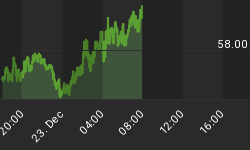Australia' current account deficit for the December quarter 2006 came in at $14.5 billion which is just over 6 per cent of GDP. This was $2.4 billion more than the September quarter and raised the country's net foreign debt to $473 billion, about 51 per cent GDP. The deficit for the year was $55.1 billion. None of this is good. Some commentators have stressed that because the surge in the deficit was caused by dividend and interest payments to overseas investors there is not much to worry about. But this misses the point.
Every economist knows that sooner or later the dollars spent on imports return to Australia. And this is what happened when foreigners bought into Australian companies. Now those profits, interest payments and dividends are being repatriated. The root cause of this situation has been the Reserve Bank's criminally loose monetary policy. since March 1996 to last September currency rose by 100 per cent, bank deposits by 143 per cent and M1 by than 132 per cent. Yet I am not aware of a single member of our economic commentariat drawing attention to these dreadful figures.
Rather than focus on the money supply commentators dredge up fallacious explanations, one of which has it that because Australians rely on debt to considerable degree to bolster their standard of living the country must suffer a higher level of foreign ownership of industry. This view easily leads to the conclusion that we must protect our industry from subsidised exports. Lurking in the shadows of this argument is the absurd assumption that foreign trade is the cause of the deficit.
International trade occurs because of differences in international prices. This observation should be the starting point for any argument on the flow of goods and service. So what we need to do is examine those forces that influence the prices of exports and imports. In a free market where money stocks and therefore currencies are stable exchanges rate will be stable. The key here is money supply. Once any country begins to expand its money stock while other remain constant there will be a downward pressure on the exchange rate. In plain English, the inflating country will find that it currency will depreciate against other currencies.
Where the exchange rate is falling imports become more expensive and exports cheaper. Changes in the money supply have therefore also brought about an unfavourable change in the terms of trade. Now this assumes that the exchange rate is allowed to freely float. However, if a country tries to maintain an overvalued currency its exports will decline and imports will increase.
But imports must be paid for. Although it is true that exports are ultimately the price of imports money is the intermediary through which this process is accomplished. But where the currency is overvalued payments must come through the capital account. In other words, borrowing. This is why a current account deficit must be matched by a surplus on the capital account. It follows that so long as the currency remains overvalued the country will continue to accumulate a foreign debt. This is has now happened to Australia whose foreign debt stood at $354 billion in December 2002 and is now $473 billion. Therefore the problem is not free trade, subsidised imports or and an "insatiable rise in consumer spending", it is a loose monetary policy.
Those who focus on consumer spending and debt never stop to ask where this debt is coming from. They would never stop to ponder how debt can actually exceed what was saved. The answer is credit expansion. The central bank has been keeping interest rates artificially low which has let the banking system recklessly expand credit which in turn has fuelled the housing boom, domestic borrowing and rising imports. But rather than lay the blame where it belongs many critics actually call for more of the same, but with government regulations to control the consequences.















